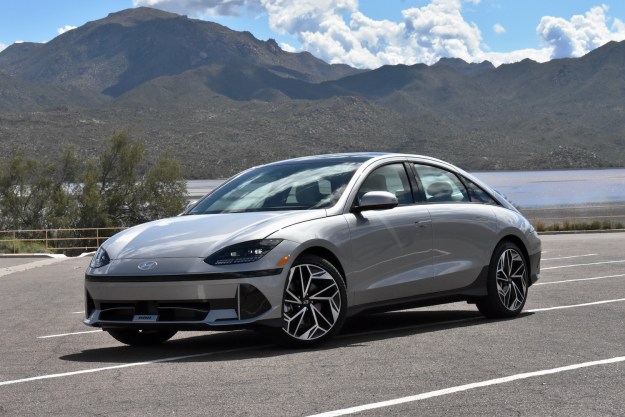Highway police in the Canadian province of Alberta chased a Tesla Model S that appeared to have no one in it. But when they eventually got to look inside, they saw two occupants apparently fast asleep, with the seats fully reclined.
The incident occurred in July, with police announcing charges on Thursday, September 17.
As the cops approached the vehicle from behind, its speed was clocked at 140 kilometers per hour (87 mph). After switching on the patrol car’s emergency lights, the Model S then sped up to 150 kmh (93 mph), 40 kmh faster than the speed limit for that stretch of road.
Royal Canadian Mounted Police Sergeant Darrin Turnbull told CBC News said he was speechless when he saw what was happening, adding: “Nobody appeared to be in the car.”
Explaining why the Model S sped up when the police car turned on its lights, Turnbull said it appeared to be because other vehicles up ahead moved out of the way, opening up the road for the Model S.
The driver, from the neighboring province of British Columbia, was originally charged with speeding and given a 24-hour license suspension for fatigue. But following a review of the incident, he was later handed a dangerous driving charge and a court summons.
The sergeant said that the Model S appeared to be driving using the car’s Autopilot feature as the 20-year-old driver and his passenger apparently slept.
“We believe the vehicle was operating on the Autopilot system, which is really just an advanced driver safety system, a driver-assist program,” Turnbull told CBC News, adding, “You still need to be driving the vehicle.”
Tesla’s Autopilot feature allows for auto-steer and traffic-aware cruise control, but being asleep at the wheel of such a vehicle is an offense.
The electric-car maker points out on its website that “all Tesla cars require active driver supervision and are not autonomous.” As a safety measure, both hands are required to be on the wheel to keep the car in motion, with the car coming to a gradual halt if the driver fails to respond to alerts telling them to follow the proper procedures. But Turnbull pointed out that “there are aftermarket things that can be done to a vehicle against the manufacturer’s recommendations to change or circumvent the safety system.” It’s not clear if this was the case regarding this particular incident.
Digital Trends has reached out to Tesla for its take on the incident and we will update this piece when we hear back.
Editors' Recommendations
- New Model 3 ‘takes out the baby fat,’ Tesla designer says in new video
- What it means now that Kia and Hyundai have adopted Tesla’s charging standard
- The BMW i4 is more luxurious than the Tesla Model S, and costs way less
- Volkswagen ID.4 vs Tesla Model Y
- The Tesla Model Y is far from my favorite EV, but I’m pretty close to buying one


